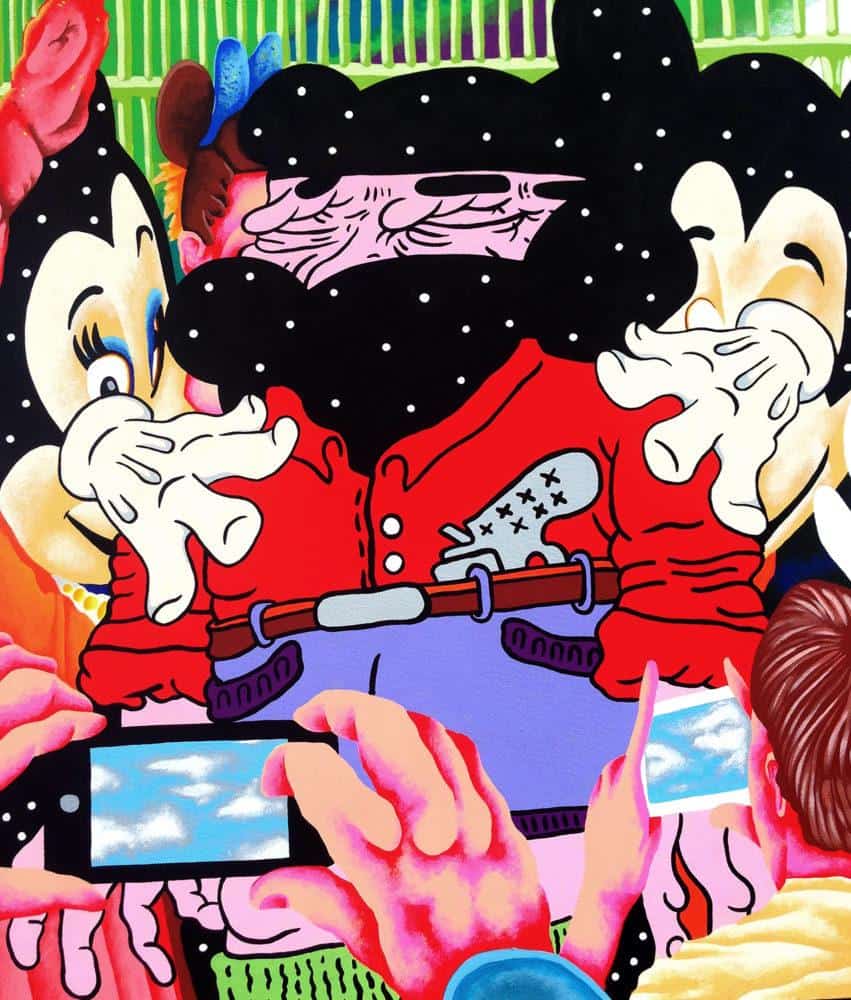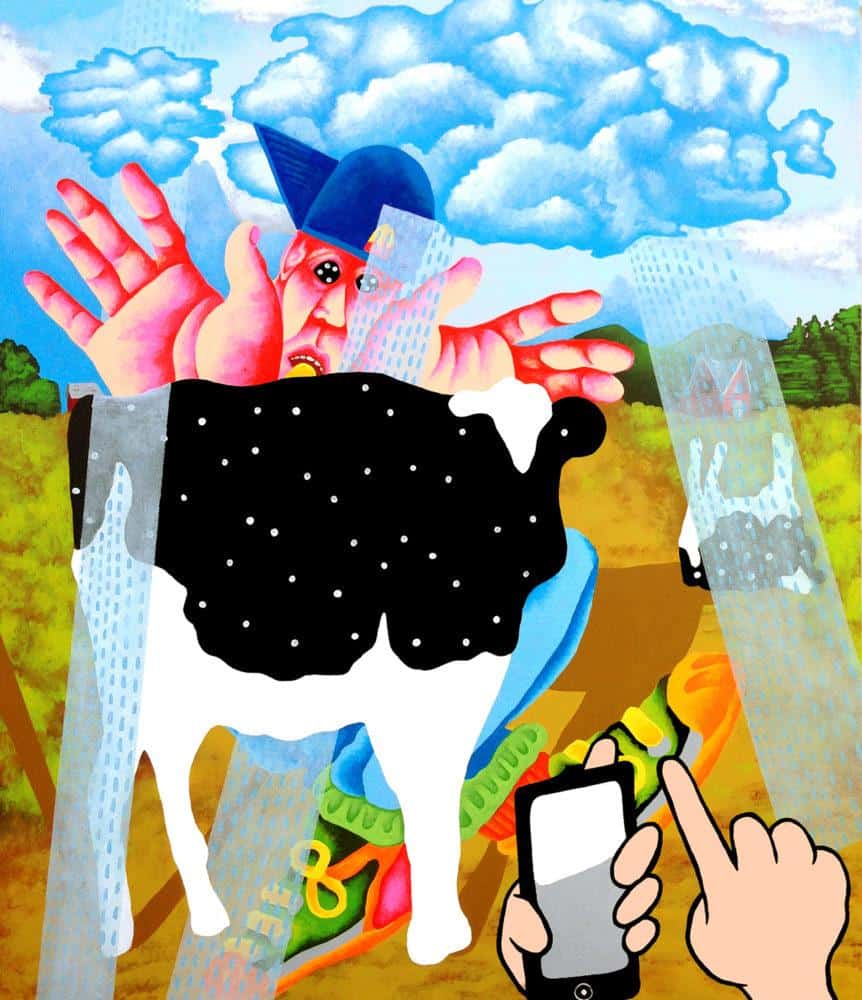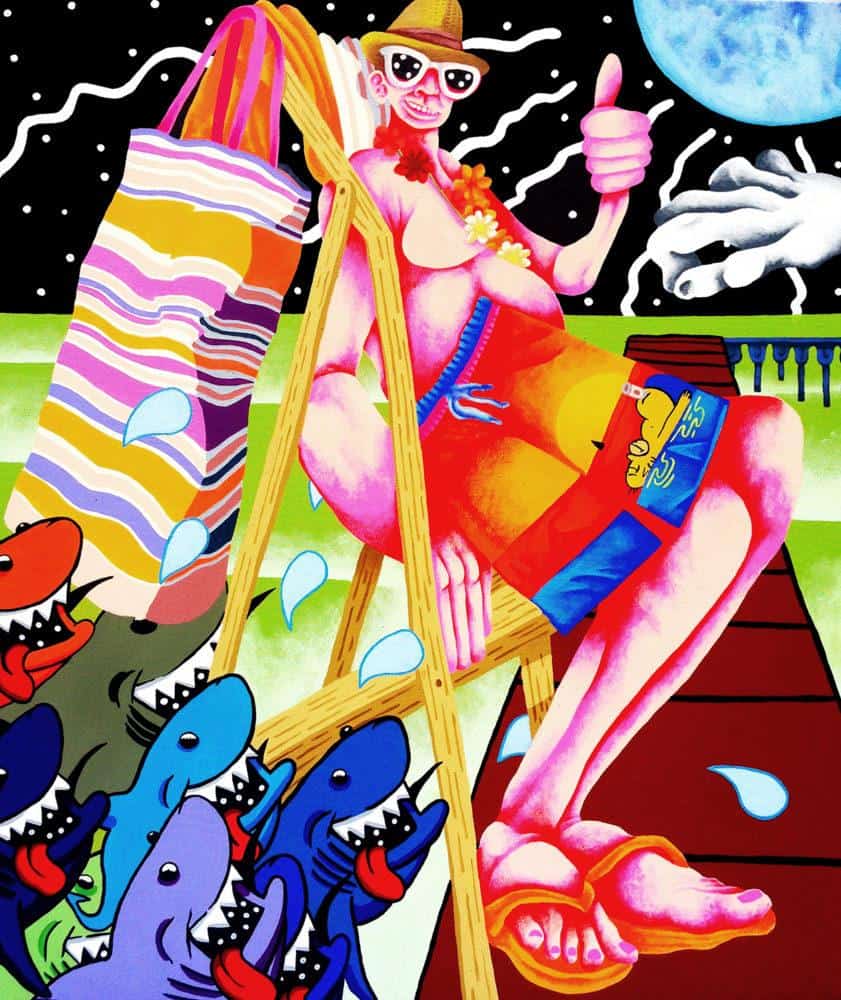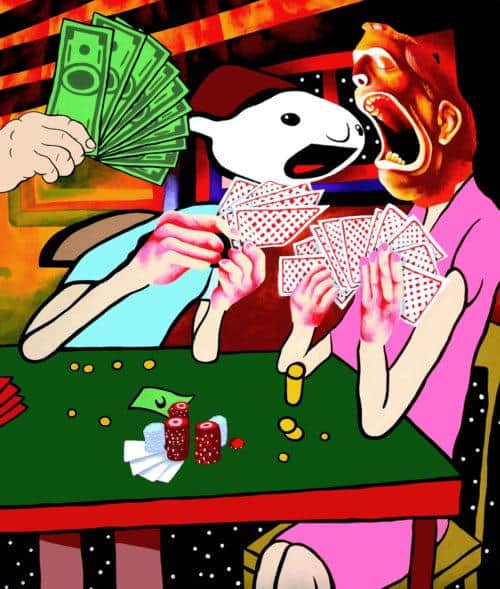
Humanoids
October 7—November 10, 2016
Artist Eben Kling
Eben Kling, Making Memories, 2016. Acrylic on canvas, 32″ × 38″.
hu·man·oid
noun (especially in science fiction) a being resembling a human in its shape.
Artspace is pleased to present Humanoids, an exhibition of paintings and drawings by Eben Kling (Artspace’s 2015-16 Artist-in-Residence) produced over the course of his 12-month residency. The new work follows Kling into unruly and bizarre pockets of working class middle America to identify that which makes us “human”. As in previous works, Kling unearths a menagerie of tragic-comedic characters who are entangled in acts of debauchery and negligence.
These works embrace the color, style and humor of Kling’s historic influences, including Chicago Imagists Peter Saul and Jim Nutt, The New York School painters Willem de Kooning and Philip Guston, and outsider artist/cartoonist R. Crumb. Like his influences, Kling approaches painting as an arena of interchangeable high and low art forms. At its basic level, his topsy-turvy landscapes question the ideology of a universal experience or collective consciousness.
One of the most striking aspects of this new work is the appearance of a black field with small white polka dots. Nothing bordering this field is safe—the black creeps atop figures and shrinks behind landscapes. This leitmotif might be read as a number of things– deep space, virtual space, digital space, non-space, surface pattern, or what Kling terms a “celestial patchwork”.
Artist in Residence interview: Eben Kling from Artspace New Haven on Vimeo.
For Humanoids, Kling will transform the white gallery walls into a black and white “celestial patchwork”. Over the course of the exhibition, he will sporadically move his paintings around the room, tracking the movements so that viewers can experience the show performing an arbitrary orbit. These theatrics partially serve to deface the seriousness with which the viewer can approach representational painting as a place for finding truth, and speaks to our human desire to derive knowledge from the great unknown.
Amid the celestial patchwork, Kling’s paintings unfold like half-conscious psycho dramas. They speak to our crises of subjectivity and embodiment. Are we awake? in a daydream? In trouble? Or just partially subsumed in a virtual reality of our own making? The physical location is also hard to pin down. Are we inside? Outside? The subject of a build board? Or a giant hoax? And taking one step back, they ask bigger things. Who are we? How did we get here? Who is not among us? And screw it– do we actually care?







